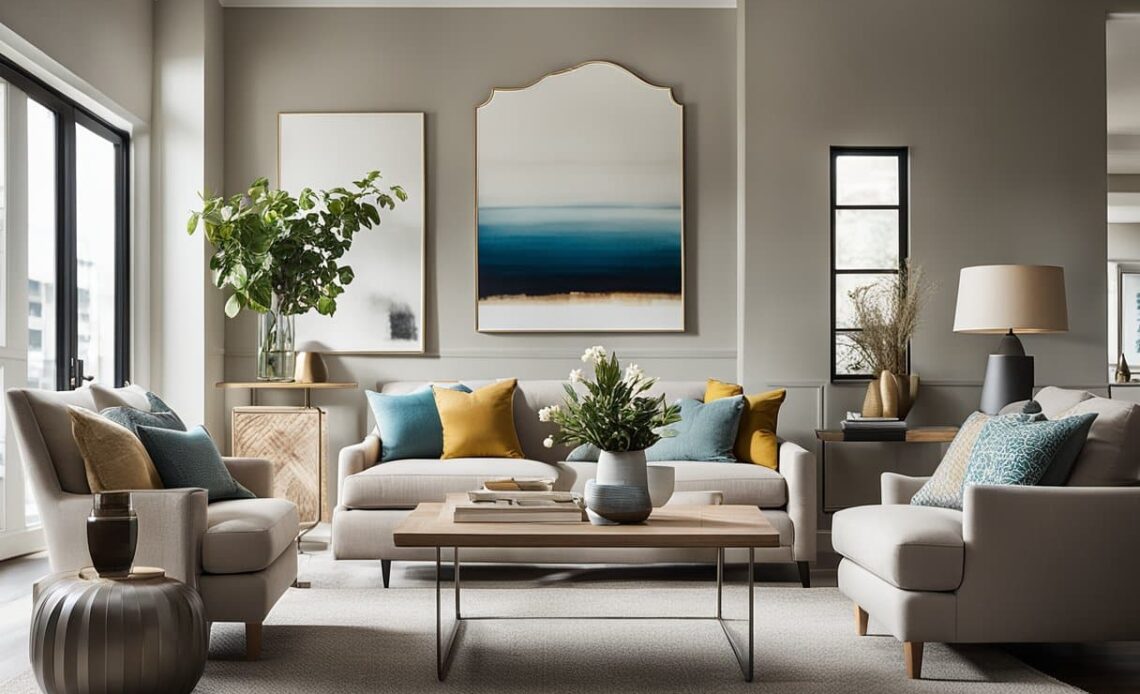One crucial component of real estate marketing that has a big influence on a property’s sales is home staging. By strategically arranging furniture and decor, sellers can highlight a home’s strengths, minimize its weaknesses, and appeal to potential buyers.
Proper furniture placement is a fundamental component of home staging that can transform a space and make it more appealing.
Importance of furniture placement and practical tips for maximizing a home’s potential.
Creating Functional Spaces
Arranging furniture in a way that makes the spaces useful and helps prospective buyers see themselves living there is the main objective of house staging.
For example, in a living room, arranging chairs around a coffee table can establish a comfortable space for conversation. In a dining room, a well-positioned table with chairs can highlight the space’s usability for family meals and entertaining guests.
Enhancing Flow and Movement
Good furniture placement also enhances the flow and movement within a home. Buyers should be able to move through each room easily without feeling cramped or obstructed. To achieve this, furniture should be arranged to create clear pathways and avoid blocking natural traffic patterns. This approach not only makes the home feel more spacious but also more inviting.
In home staging, it’s essential to ensure that every room appears open and accessible, which can be achieved through thoughtful furniture placement.
Maximizing Visual Appeal
Proper furniture placement can significantly enhance a room’s aesthetics by creating balanced and harmonious arrangements. Using furniture to highlight key points, such as a fireplace or a large window, can draw attention to these features.
It’s also important to select furniture that fits each room properly in terms of size. Oversized pieces can make a space feel cramped, while too-small furniture can make it seem empty and underutilized. Striking the right balance helps create a visually pleasing environment that attracts buyers.
Highlighting Architectural Features
One can also accentuate a home’s architectural elements with well-placed furniture. For example, placing a sofa or chairs in front of a large window can draw attention to the view outside. Positioning a dining table under a chandelier can emphasize the lighting fixture as a focal point.
By using furniture to accentuate these features, sellers can showcase the unique aspects of the home that set it apart from others on the market.
Creating Emotional Connections
One of the key objectives of home staging is to create emotional connections between the buyers and the home. Thoughtful furniture placement can help achieve this by making spaces feel warm and inviting. For instance, adding a comfortable reading nook in a quiet corner or setting up a cozy breakfast area in the kitchen can evoke a sense of home and comfort.
These subtle touches can make a significant difference in how potential buyers perceive the property and whether they can envision themselves living there.
Adapting to Different Styles
Furniture placement in home staging should also adapt to different interior design styles to appeal to a broad range of buyers. Whether the home has a modern, traditional, or eclectic style, the furniture arrangement should complement the overall design theme.
This adaptability can make the home more attractive to various buyers, increasing the likelihood of a successful sale. It’s essential to consider the target demographic and choose furniture and layouts that will resonate with them.
Conclusion
Furniture placement is a crucial element of home staging that can significantly influence a property’s appeal to potential buyers. Adaptable and thoughtful placement tailored to the home’s style can further enhance its attractiveness to a diverse audience. When done correctly, furniture placement can be a powerful tool in the home staging process, ultimately leading to a quicker and more profitable sale.

